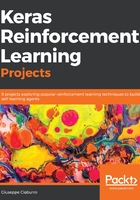
Unsupervised learning
The aim of unsupervised learning is to automatically extract information from databases. This process occurs without a priori knowledge of the contents to be analyzed. Unlike supervised learning, there is no information on the membership classes of examples, or more generally on the output corresponding to a certain input. The goal is to get a model that is able to discover interesting properties: groups with similar characteristics (clustering), for instance. Search engines are an example of an application of these algorithms. Given one or more keywords, they are able to create a list of links related to our search.
The validity of these algorithms depends on the usefulness of the information they can extract from the databases. These algorithms work by comparing data and looking for similarities or differences. Available data concerns only the set of features that describe each example.
The following diagram shows supervised learning (on the left) and unsupervised learning examples (on the right):

They show great efficiency with elements of numeric type, but are much less accurate with non-numeric data. Generally, they work properly in the presence of data that is clearly identifiable and contains an order or a clear grouping.